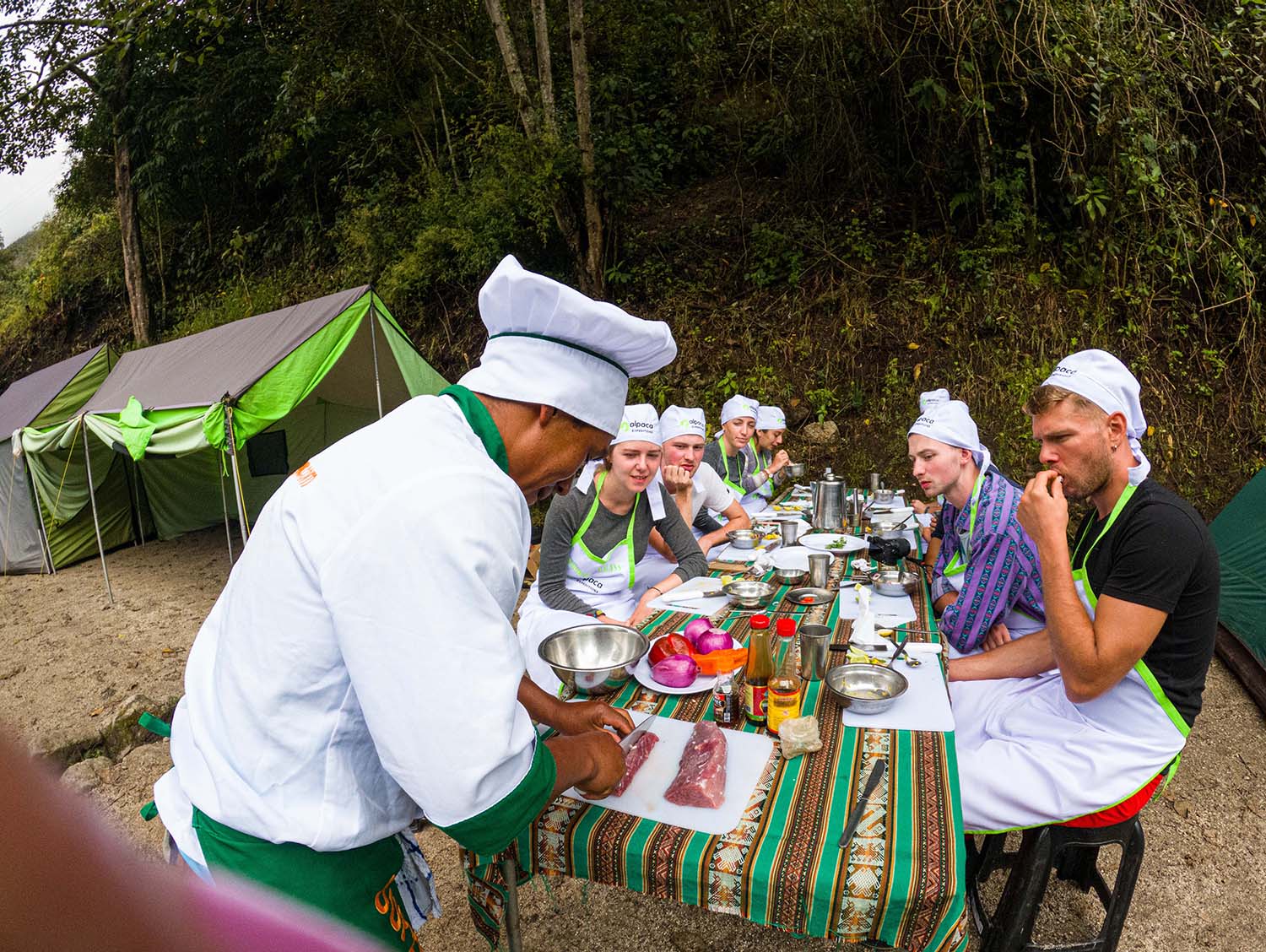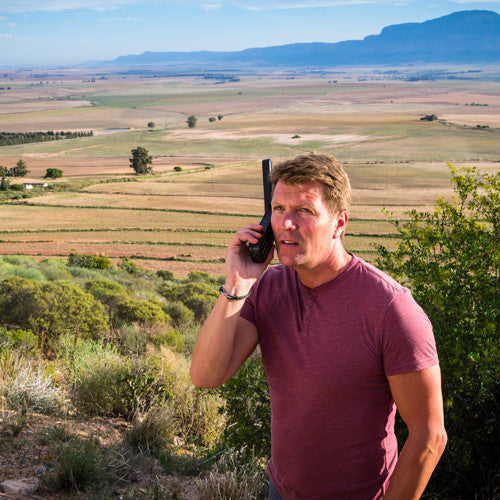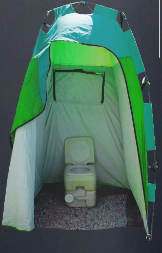Timeless Treasures of Lima: Exploring Historic Landmarks and Architecture in Peru’s Coastal Capital
Walking Through Lima’s Living History
When our travelers arrive in Lima, many treat the city as a brief stop on the way to Cusco or the Amazon. Yet Peru’s capital deserves its own exploration. Founded by Spanish conquistador Francisco Pizarro in 1535 and once called the “City of Kings,” Lima grew into the political and cultural heart of the Viceroyalty of Peru.
Its streets reveal a centuries‑old story of power, faith and resilience. Architectural masterpieces with ornate balconies, earthquake‑resistant quincha walls and colorful azulejo tiles whisper tales of conquistadors and saints.
In this long‑form guide, we’ll wander through Lima’s historic center and beyond, uncovering baroque cathedrals, colonial mansions, hidden catacombs and vibrant plazas. We’ll blend researched history with traveler tips, telling the story through the eyes of our local guides at Alpaca Expeditions. You’ll learn the best times to visit, where to eat and stay, what tickets cost, and how to navigate the city safely and sustainably.
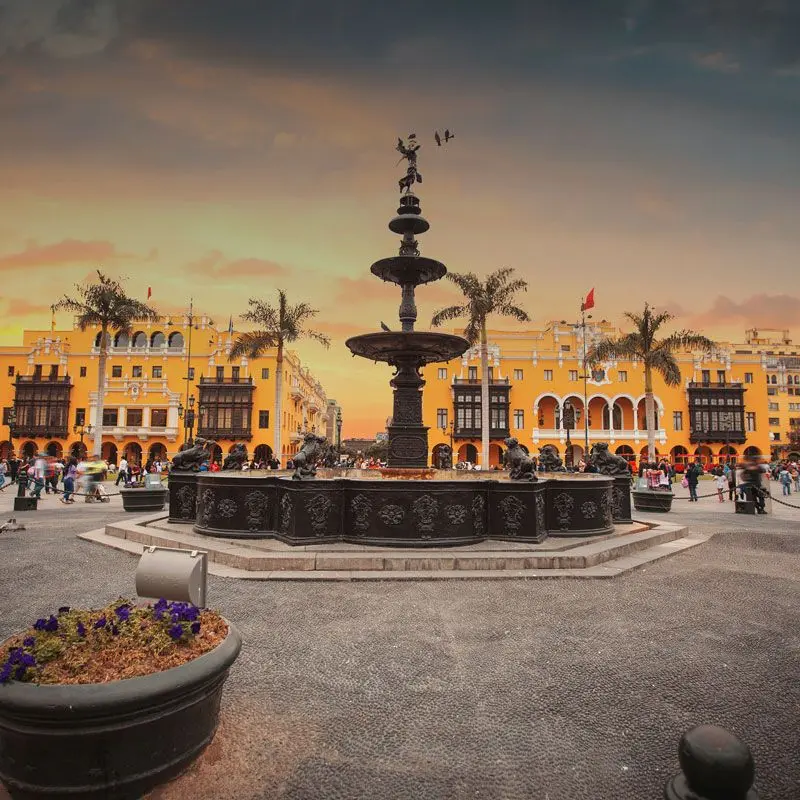
Lima tour
Our goal is not just to check landmarks off a list but to bring them to life with rich context, personal anecdotes and practical details. Think of this as a conversation with a knowledgeable friend who happens to love Peruvian history.
“Lima is not just a layover; it’s a living museum. Every balcony, church dome and cobbled street has a story. Let us show you why our capital is one of Peru’s most rewarding destinations.” – Alpaca Expeditions
Understanding Lima’s Historic Landscape
Geography, Altitude and Climate
Lima sits on Peru’s central Pacific coast, nestled between the ocean and the foothills of the Andes. Copernicus (the European earth‑observation program) describes the city as being located on the coastal plain at roughly 150 metres above sea level.
This low elevation means visitors arriving from sea level need no acclimatization, unlike the high‑altitude destinations of the Andes or Lake Titicaca. The city’s climate is influenced by the cold Humboldt Current and the coastal desert.
According to Impactful Travel’s responsible tourism article, the coastal region is very dry all year round, with no more than 10 mm of annual precipitation. From December to March the weather is sunny, making it popular for beachgoers. The other months often see fog (locally called garúa) and high humidity even without rain. This means you can visit Lima at any time – just pack layers and expect overcast skies outside of summer.

Historic place Lima
Lima experiences mild temperatures ranging from about 15 °C (59 °F) in winter to 28 °C (82 °F) in summer. Because the city is at sea level, altitude sickness is not a concern here, but many travelers use Lima to acclimatize before venturing into the Andes.
For reference, altitude sickness generally begins around 2,500 m (8,200 ft) and is rare at coastal elevations. If you plan to continue to Cusco or other high‑elevation areas, follow prevention tips like ascending slowly, staying hydrated and consulting your doctor.
A UNESCO World Heritage Site
Lima’s historic center was declared a UNESCO World Heritage site in 1988 for its outstanding architecture and urban design. Pizarro laid the city out in a European grid pattern known as the Plaza Mayor or main square, which still serves as the heart of government and religious life.
During the viceroyalty, Lima became the seat of the Spanish empire in South America. Religious orders built grand cathedrals, convents and monasteries with Baroque facades and Moorish‑inspired wooden balconies, while wealthy families constructed palatial mansions blending Andalusian, Mudéjar and Churrigueresque styles. Earthquakes were frequent, so builders used a mix of adobe and quincha (wooden framework with cane and mud) to create structures that could absorb tremors.
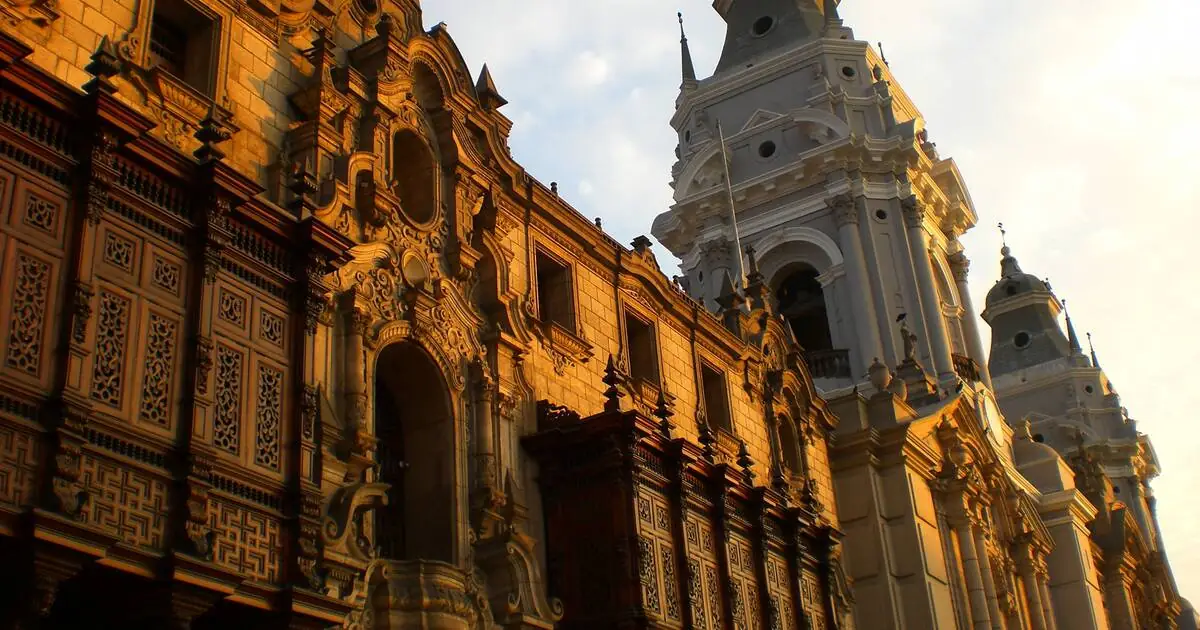
UNESCO heritage Lima
Despite modernization, UNESCO notes that Lima’s historic layout and important ensembles – including the Plaza Mayor, cathedral, archbishop’s palace and San Francisco complex – have largely retained their authenticity. These sites not only represent colonial architecture but also reflect the fusion of indigenous, African and European influences that define Peru’s culture today.
When to Visit Lima
Because Lima’s weather is mild year‑round, the best time to visit depends on your preferences. Impactful Travel suggests that the May–October dry season is generally the best period for visiting Peru’s Andes, but notes that the coastal region (including Lima) remains dry and sunny during December–March.
The shoulder seasons (April and November) offer fewer crowds and green landscapes. If you prefer sunny skies and beach days, plan your trip during the Southern Hemisphere summer (December–March). For cooler temperatures and smaller crowds, consider autumn or spring.
Insider Tip – Festivals & Events
Lima hosts numerous festivals that can either enhance or complicate your visit. January’s Anniversary of Lima features parades and concerts downtown. Semana Santa (Holy Week) in March or April fills churches with processions.
July’s Fiestas Patrias celebrate Peru’s independence with fireworks and military displays; many public offices close and crowds pack the Plaza Mayor. December brings Christmas markets and nativity scenes. Our guides recommend scheduling extra time if your visit coincides with these events, as traffic and accommodation prices increase.
Navigating Lima
The historic center is walkable but sprawling. Many travelers base themselves in Miraflores, a coastal district known for its parks, cafes, and safety. Travel blogger Christine Kaaloa writes that Miraflores is the most popular district for travelers and is about a one‑hour drive from Jorge Chávez International Airport, costing around 60 Peruvian soles by taxi.
Budget travelers can take the Airport Express bus to Miraflores for around 25 PEN. Within the city, Lima’s Metropolitano bus system has its own lane and is an inexpensive way to travel between districts. Taxis are abundant; look for official taxis with license numbers, especially at night.
Top Historic Buildings and Landmarks at Lima
Plaza Mayor (Plaza de Armas) of Lima
The Plaza Mayor is Lima’s birthplace. Here, on January 18 1535 Pizarro proclaimed the city and laid out the colonial grid. The square has witnessed everything from viceroyal ceremonies to the declaration of Peru’s independence in 1821.

Plaza Mayor
Today the plaza is framed by the Government Palace, Metropolitan Cathedral, Archbishop’s Palace, Municipal Palace and colonial arcades. Pigeons flutter around the central fountain, while locals and visitors rest on benches under palm trees. This is the best place to start your architectural exploration.
Government Palace (Casa de Pizarro) of Lima
Occupying the northern side of the Plaza Mayor, the Government Palace is the seat of Peru’s executive branch and the official residence of the president. The original palace was built by Pizarro on top of a pre‑Incan huaca; today’s building dates mostly from the 1920s and showcases Neo‑Plateresque and Neo‑Baroque styles.
Polish architect Ricardo de Jaxa Malachowski designed the majestic facade with ornate stonework and balustrades. Inside, formal rooms such as the Golden Hall—inspired by the Hall of Mirrors at Versailles—and the Sevillian patio feature marble columns, crystal chandeliers and Sevillian tiles.
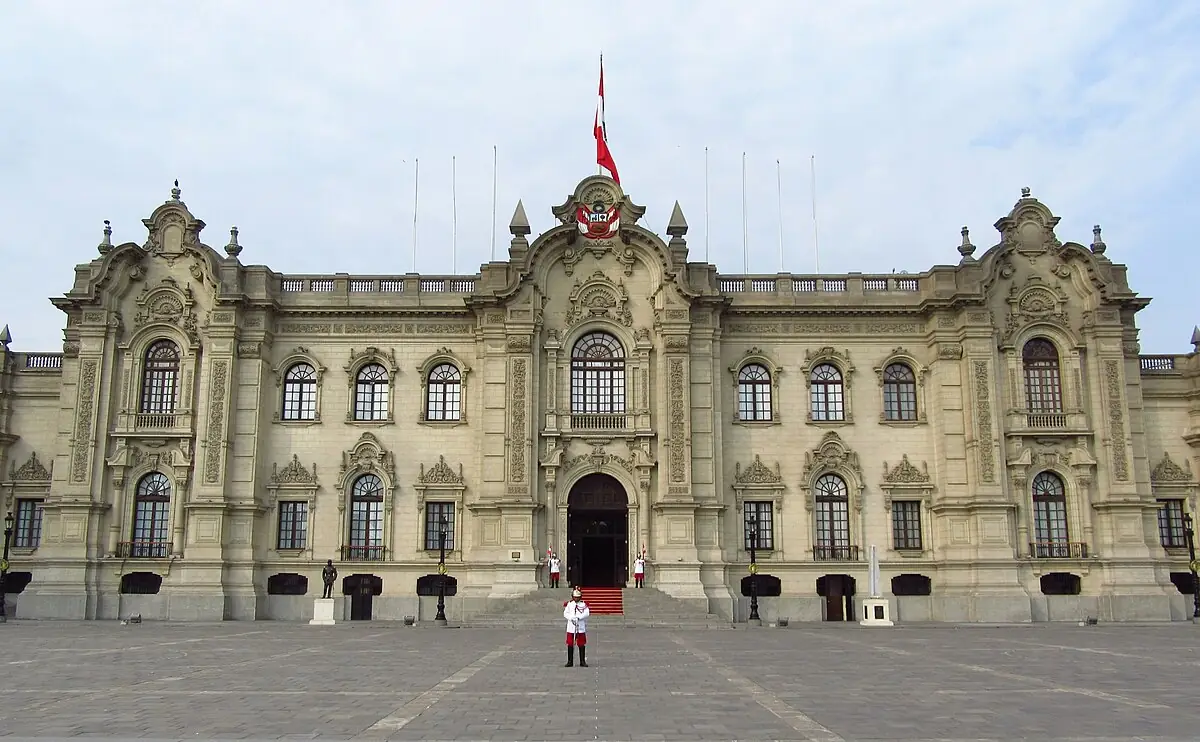
Government Palace
The palace is usually closed to tourists but the changing of the guard takes place at noon daily and can be watched from the plaza. If you’re lucky, you may catch glimpses of the presidential gardens through the gates.
Visiting tip: Arrive around 11:45 a.m. to secure a good spot for the changing of the guard. Be mindful of pickpockets in the crowd and keep valuables secure.
Metropolitan Cathedral of Lima
Standing opposite the palace, the Metropolitan Cathedral reflects Lima’s turbulent history. Construction began in 1535 and continued through successive earthquakes and redesigns until 1797.
The cathedral’s facade combines Renaissance symmetry with Plateresque decoration, while its two towers exhibit Neoclassical elements inspired by El Escorial. Inside, the layout follows a rectangular hall plan modeled on Seville Cathedral with ribbed wooden vaults mimicking Gothic stone vaults.

Cathedral of Lima
Many original Baroque altars were later replaced with Neoclassical ones, yet several chapels retain carved retablos and paintings. Notably, a glass coffin near the main altar holds Pizarro’s remains. The adjoining Museum of Religious Art displays colonial art and liturgical objects.
Admission to the cathedral is ticketed. Travel blogger Matt P explains that visitors can buy a combined ticket for the cathedral and the Archbishop’s Palace for 30 soles; individual tickets cost 20 soles. Students pay about 10 soles and children 3–5 soles. The entrance is on the left side of the facade. Guided tours in English are available and worth considering to appreciate the art and history.
Archbishop’s Palace of Lima
Next to the cathedral, the Archbishop’s Palace is a masterpiece of the Spanish Colonial Revival style. The current building was inaugurated in 1924 and, like the palace, was designed by Ricardo de Jaxa Malachowski. It features carved stone walls, grand cedar balconies and a granite statue of Saint Turibius of Mogrovejo above the entrance.

Archbishop’s Palace
Inside, marble staircases, stained glass windows and a chapel adorned with gold leaf showcase early 20th‑century craftsmanship. The palace still functions as the residence of the archbishop but is open to visitors with the same ticket used for the cathedral. Don’t miss the opulent patios and collection of religious art.
Municipal Palace (City Hall) of Lima
On the west side of the plaza stands the Municipal Palace of Lima, home of the city council. The current building, begun in 1939, echoes colonial architecture with tall windows and graceful arches. It was designed by Emilio Harth Terré, José Álvarez Calderón and Ricardo de Jaxa Malachowski.

Municipal Palace
Though generally closed to tourists, its exterior is a lovely example of early 20th‑century civic architecture. From the plaza you can photograph its yellow facade and wooden balconies.
Basílica y Convento de San Francisco and the Catacombs
A short walk northeast of the plaza brings you to the Basilica and Convent of San Francisco, one of Lima’s most significant religious complexes. Built between the 16th and 18th centuries, it comprises a main church with a Baroque facade and two smaller churches (Nuestra Señora de la Soledad and El Milagro) with Neoclassical fronts.
The complex survived numerous earthquakes thanks to its quincha construction and houses a renowned library filled with 25,000 antique volumes. However, its most famous attraction lies underground: the catacombs.
The catacombs were used as a cemetery from around 1600 until 1810 and contain the remains of an estimated 25,000 bodies. Travel blogger Rowena Li notes that visitors must join a guided tour to see the monastery’s library and catacombs and that the experience is well worth the 10 soles admission.
Tours last about one hour and run between 9:30 a.m. and 5:45 p.m.. A more detailed guide suggests that the catacombs tour costs 15 soles and includes access to the museum. Expect dimly lit tunnels lined with bones arranged in geometric patterns; photography may be restricted.
Insider tip: Wear comfortable shoes and watch your head – ceilings are low. The humidity can be high underground, so bring water. Guides offer explanations in Spanish and English.

Basilica and Convent of Santo Domingo
West of Plaza Mayor
West of Plaza Mayor stands the Basilica of Santo Domingo, famous for housing the relics of three major Peruvian saints: St. Rose of Lima, St. Martin de Porres and St. John Macias. Construction began in the 1530s and spanned several decades; the bell tower, designed in Rococo style by Viceroy Manuel de Amat y Junyent in 1766, reaches 46 m high.
The church’s interior includes cedar wood choir stalls considered some of Peru’s finest carvings, while azulejo‑lined cloisters evoke Seville. The adjoining museum displays religious art and historical artifacts.
According to Traveling with a View, the church is free to enter, but the Museum of Santo Domingo charges an entrance fee: 10 soles for adults, 5 soles for university students and 1 sole for children. The museum is open daily from 9:30 a.m. to 6 p.m.. Visitors can also climb the bell tower with a guide to enjoy panoramic views of Lima.
Basilica and Convent of Nuestra Señora de la Merced
Just south of the Plaza Mayor lies La Merced, a minor basilica founded in the 16th century. Its ornate Churrigueresque facade features twisted columns, elaborate stonework and statues. The church commemorates Our Lady of Mercy, patron of the Mercedarian Order, who played a key role in the rescue of Christian captives during the Reconquista.
Even if the church is closed, travelers admire the facade’s intricate carving. When open, the interior reveals richly gilded altars and a carved sacristy. Best of all, admission is free, making this church an accessible stop on any walking tour.
Casa de Aliaga
Across from the Government Palace stands Casa de Aliaga, arguably South America’s oldest continuously inhabited house. After Lima’s founding, Pizarro granted the plot to his captain Jerónimo de Aliaga; the Aliaga family has lived here for seventeen generations. The house sits atop a pre‑Columbian huaca dedicated to Taulichusco, blending Spanish and indigenous history.
Its modest exterior hides a lavish interior featuring Spanish tiles, carved ceilings and a marble staircase. Family heirlooms like Aliaga’s sword adorn the walls. Casa de Aliaga operates as a private museum; visits must be pre‑arranged, and general admission costs around 30 soles.
The house is open from 9:30 a.m. to 5 p.m. and sometimes includes a dining experience with the owner on Thursdays. Because space is limited, we recommend booking at least a week ahead.
Palacio de Torre Tagle
A jewel of Lima’s civil architecture, the Palacio de Torre Tagle was completed in 1735 and today houses Peru’s Ministry of Foreign Affairs. Architect Héctor Velarde Bergmann described it as a masterpiece combining Andalusian Baroque, Mudéjar and Churrigueresque elements.
The facade features a carved stone portal flanked by two carved wooden balconies made of cedar and mahogany. Inside, a zaguan leads to a central courtyard framed by arcades; rooms decorated with Sevillian azulejos and baroque altars reflect the wealth of its original owners.
The palace is usually closed to casual visitors because it houses a government ministry, but guided tours may be available through special arrangements. Even from the street, however, the twin balconies and baroque doorway are worth admiring.
Casa de Osambela (Casa de Oquendo)
Built between 1803 and 1805, Casa de Osambela is one of Lima’s grandest mansions. Merchant Martín de Osambela built this residence on land once belonging to the Dominicans after the 1746 earthquake. The house boasts a wide facade with five Louis XVI balconies that combine Neoclassical and Rococo styles.
Its four levels surround courtyards, and an octagonal lookout dome tops the roof – unusual for Lima due to earthquake regulations. The interior features French Rococo decor, grand staircases and spacious reception halls.

Casa de Osambela (Casa de Oquendo)
Casa de Osambela is now used for cultural events and sometimes hosts art exhibitions; contact the cultural institute for current schedules. Entrance fees vary depending on the event, but the exterior can always be viewed free of charge.
Basilica and Convent of Nuestra Señora de la Soledad & El Milagro
Part of the San Francisco complex, the chapels of Nuestra Señora de la Soledad and El Milagro flank the main church. Their Neoclassical facades contrast with the baroque architecture of the main basilica. Inside, simple altars and quiet chapels provide a respite from the crowds. Admission is included in the guided tour of the San Francisco complex.
Additional Sites to Explore in Lima
- La Casa de la Literatura Peruana – Housed in the old Desamparados train station, this cultural center displays Peruvian literature and hosts readings.
- San Pedro Church – A Jesuit church known for its elaborate gilded altars and ceiling frescoes.
- Huaca Pucllana – An adobe pyramid dating to the Lima culture (AD 200–700) in the district of Miraflores; evening tours are magical.
- Barranco district – A bohemian neighborhood filled with colorful mansions, street art and the famous Bridge of Sighs.
Suggested Itineraries
One‑Day Historic Center Tour
Morning
- Start at Plaza Mayor at 8:30 a.m. to enjoy the square before crowds arrive. Take photos of the Government Palace and watch the city wake up.
- Visit the Metropolitan Cathedral and Archbishop’s Palace when they open around 9 a.m. Purchase the combined ticket (30 soles) and explore the chapels, art museum and balconies. Don’t miss Pizarro’s tomb.
- Walk to the Municipal Palace for exterior photos. Notice the stained glass on the balconies and imagine council meetings inside.
Lunch
- Eat at a nearby restaurant serving classic dishes like ceviche, lomo saltado or pollo a la brasa. In Miraflores, try one of the top cevicherías such as La Red or Punto Azul.
Afternoon
- Tour Casa de Aliaga (pre‑booking required). Spend an hour wandering through rooms filled with 17 generations of history.
- Walk to La Merced and admire its Churrigueresque facade.
- Explore the San Francisco Church and Catacombs. Join the 30‑minute guided tour (10–15 soles) to see the library and ossuary.
Evening
- Stroll through the pedestrian street Jirón de la Unión, connecting Plaza Mayor to Plaza San Martín. Watch street performers and buy souvenirs.
- Dinner in Barranco. Take a taxi (~20 soles) or the Metropolitano to Barranco. Dine at a coastal seafood restaurant and walk across the Puente de los Suspiros.
Two‑Day Extended Exploration
Day 1 follows the one‑day itinerary. On Day 2, venture beyond the historic center:
- Huaca Pucllana – Take a morning guided tour of this pre‑Inca adobe pyramid in Miraflores. Learn about ancient Lima culture and enjoy brunch at the on‑site restaurant.
- Larco Museum – Located in the Pueblo Libre district, this museum displays a vast collection of pre‑Columbian art, including ceramics and gold artifacts. Enjoy lunch in its beautiful garden café.
- Parque del Amor & Malecón – Walk along Miraflores’ cliff‑top parks overlooking the Pacific Ocean. At sunset, locals gather at the Parque del Amor to watch paragliders soar.
- Barranco district – Spend the evening exploring Barranco’s galleries, cafés and street art. Visit the MATE museum (Mario Testino’s photography foundation) and sip a pisco sour at a bar with live music.
Travel Tips & Practical Information
What to Pack for Lima
- Light layers – Lima’s coastal weather can be cool and damp even in summer. Bring a sweater or jacket for foggy mornings and evenings.
- Comfortable walking shoes – Many streets are cobblestone, and you’ll be on your feet exploring museums and catacombs.
- Sun protection – Even under cloud cover, UV rays are strong; pack sunscreen, sunglasses and a hat.
- Reusable water bottle – Hydration is important; though altitude isn’t a problem in Lima, staying hydrated prepares you for higher elevations.
- Small change in soles – Many admission fees and taxis require cash; carry small bills and coins.
- Travel insurance – Cover incidents like trip delays and health emergencies.
Staying Safe in Lima
Lima is generally safe in tourist areas, but petty theft can occur. Travel writer Rowena Li advises travelers to avoid Rimac and La Victoria at night, especially when alone. She notes that most tourist zones like Miraflores and Barranco are relatively safe. Basic precautions include:
- Keep valuables out of sight; use a money belt or cross‑body bag.
- Beware of pickpockets in crowded markets and on public transit.
- Decline offers to exchange large bills; scams involving counterfeit money have been reported.
- Use official taxis with license numbers or ride‑hailing apps, especially at night.
- Avoid walking alone in deserted areas after dark and seek advice from hotel staff about current safety conditions.
Transportation
- Airport transfer: A taxi from the airport to Miraflores costs about 60 soles; the Airport Express bus is 25 soles.
- Metropolitano bus: Runs along a dedicated lane connecting northern and southern districts; buy a rechargeable card at stations. Safe and efficient, but pickpockets can operate during rush hour.
- Taxis: Use registered companies or apps. Avoid hailing random taxis late at night.
- Minibuses (“combis”): Cheap but chaotic; recommended for confident Spanish speakers only.
Budgeting & Admission Fees in Lima
| Site | Admission Fee (PEN) | Notes |
| Metropolitan Cathedral & Archbishop’s Palace | 30 sole combined ticket; 20 soles individually | Students 10 soles; children 3–5 soles |
| San Francisco Catacombs & Museum | 10–15 soles for guided tour | Includes catacombs; tours 30 min, 9:30 a.m.–5:45 p.m. |
| Santo Domingo Museum | 10 soles (general), 5 soles (students), 1 sole (children) | Church entry free; includes bell tower. |
| Casa de Aliaga | ~30 soles | Reservation required; open 9:30 a.m.–5 p.m. |
| Casa de Osambela | Varies; many exhibits are free | Check cultural schedules. |
| La Merced Church | Free | Donations welcome. |
| Airport Express bus | 25 soles | One‑way to Miraflores. |
| Taxi to/from airport | ~60 soles | Negotiate before departure. |
| Museum of Larco | ~35 soles (external source, typical 2025 price) | Not cited; verify locally. |
Dining & Cuisine
Lima is known as the culinary capital of South America. In her 48‑hour guide, Rowena Li recommends trying classic dishes such as ceviche, chifa (Peruvian Chinese), lomo saltado and sandwiches like the La Lucha (Peruvian version of a Philly cheesesteak).

Lima Dining & Cuisine
Top cevicherías include La Red, Chez Wong and La Mar, while Punto Azul offers great ceviche for dinner. Don’t miss sampling pollo a la brasa, mazamorra morada (purple corn pudding) and palta a la reina (avocado‑stuffed chicken). Wash it down with a pisco sour, Peru’s national cocktail; some bars add passion fruit or other tropical juices.
Where to Stay in Lima
Most visitors choose Miraflores for its safety, dining and ocean views. Hotels range from budget hostels to luxury properties. The Dazzler Lima offers large rooms and a breakfast buffet featuring regional foods.
Airbnbs with kitchen facilities cost around US $30 per night. If you prefer to stay in the historic center, consider boutique hotels in refurbished colonial buildings; they put you steps away from major sites but may be noisier. For a bohemian vibe, look at Barranco guesthouses.
Real Traveler Insights & Stories about Lima
One of our recent travelers, Maria from Spain, shared her impression of Lima’s catacombs: “I’ve visited many churches, but wandering through the catacombs of San Francisco was unlike anything I’d experienced. Knowing that 25,000 people were buried there and seeing the bones arranged in patterns made me think about Lima’s colonial society and how they treated death.”
Another visitor, James from Canada, loved Casa de Aliaga: “Walking through this family home felt like stepping into a time machine. The Aliaga family has been here since the city’s founding! Our guide pointed out where Pizarro’s troops would have entered and explained how the house blends indigenous and Spanish influences. It was worth the extra planning.”
We also hear from many travelers that Lima’s food scene surpasses their expectations. Sarah from Australia wrote: “I thought Peru was all about Machu Picchu, but I fell in love with Lima’s cuisine. The ceviche at La Mar and the chifa dishes were unforgettable. Our Alpaca Expeditions guide took us to a small local restaurant where we tried palta a la reina. I’m already planning a return trip just to eat.”
These stories show how Lima’s heritage and gastronomy provide memorable experiences beyond the famous Inca ruins. Hearing from real travelers underscores our mission at Alpaca Expeditions: to share Peru’s diverse culture with authenticity and respect.
Why Explore Lima With Alpaca Expeditions
At Alpaca Expeditions, we believe travel should be immersive, responsible and personal. Our team of Peruvian guides is passionate about sharing the stories behind Lima’s streets. Here’s what sets us apart:
- Local Expertise: Our guides are born and raised in Peru. They know the legends behind each church bell and balcony, ensuring you hear the stories that guidebooks miss.
- Small Groups: We keep our groups small (typically 8–12 travelers) so you can ask questions, take photos and move at a comfortable pace.
- Responsible Tourism: We support local communities through fair wages and charitable projects. In Lima, we partner with family‑run restaurants and artisans to ensure your spending stays local.
- Customized Experiences: Whether you have half a day or a week in Lima, we build itineraries around your interests—architecture, photography, gastronomy or family history.
- Safety First: Our guides monitor city conditions and know which areas to avoid after dark. We use vetted transportation and keep an eye on your belongings so you can relax and enjoy the sights.
- Continuous Support: From the moment you book until your return home, our team is available for questions, changes and emergency assistance.
By choosing Alpaca Expeditions, you’re not just booking a tour; you’re joining a community committed to preserving Peru’s heritage while creating unforgettable journeys.
Frequently Asked Questions
How many days should I spend in Lima?
We recommend two full days in Lima to appreciate both the historic center and outlying districts. One day allows you to see the highlights around Plaza Mayor (cathedral, palaces, catacombs), while a second day lets you explore museums like Larco, pre‑Inca sites like Huaca Pucllana, and neighborhoods like Miraflores and Barranco. However, even a single day can be rewarding with a focused itinerary.
Do I need a guide to visit the catacombs?
Yes. The San Francisco catacombs can only be visited on a guided tour. Tickets cost about 10–15 soles and the tour lasts roughly 30 minutes. Guides explain the history and ensure safety in the narrow passages. English‑language tours are usually available; ask at the ticket counter.
Are the catacombs scary?
The catacombs can feel eerie because of the bone displays and dim lighting. However, they are well-maintained and not designed to frighten visitors. If you are uncomfortable in enclosed spaces, you may prefer to skip this part of the tour. Children over 10 generally find it fascinating.
What should I wear when visiting churches?
Peru is predominantly Catholic, and some churches have modest dress codes. Avoid shorts or sleeveless tops when entering churches and carry a scarf or shawl to cover your shoulders. Comfortable shoes are essential; you’ll walk on uneven floors and climb stairs.
Can I take photos inside the churches and museums?
Photography policies vary. In the cathedral and archbishop’s palace, photography without flash is generally allowed. In the San Francisco complex, photography in the library and catacombs is restricted; ask your guide. Always respect signs indicating no photos.
How do I buy tickets for Casa de Aliaga?
Because Casa de Aliaga is privately owned, visits must be booked in advance through Alpaca Expeditions or directly with the house. Admission costs around 30 soles. We recommend reserving at least a week ahead.
Is Lima safe for solo travelers?
Most tourist areas are safe during the day, especially Miraflores, Barranco and the historic center. Exercise caution after dark, avoid deserted streets, and use official taxis. Locals advise against venturing into Rimac and La Victoria at night. Keep valuables hidden and be alert in crowds.
What’s the best way to get from the airport to the city?
A taxi to Miraflores costs about 60 soles and takes around one hour. The Airport Express bus is a cheaper option at 25 soles. Book taxis at official counters inside the airport to avoid scams.
When is the best time to visit Lima?
Lima’s coastal climate is mild year‑round. Summer (December–March) offers sunshine and beach weather. The rest of the year is cooler with fog and humidity but little rain. Visit during shoulder months (April, May, October, November) for fewer crowds.
Will I get altitude sickness in Lima?
No. Lima sits about 150 m above sea level, so you won’t experience altitude sickness here. Symptoms usually occur at elevations over 2,500 m. If you plan to travel to Cusco or the Andes, follow our acclimatization tips and drink plenty of water.
Do I need to book tours in advance?
For popular attractions like Casa de Aliaga, the catacombs, and certain museums, reservations ensure availability. Alpaca Expeditions can handle bookings as part of your itinerary. During high season (July–August) and holidays, pre‑booking is strongly recommended.
Conclusion
Lima’s historic center is a tapestry of stories woven through architecture. From the Plaza Mayor, where Peru’s independence was proclaimed, to the catacombs holding the remains of 25,000 souls, every building invites you to step back in time. The city’s blend of Spanish, indigenous, and African influences, its resilience against earthquakes, and its vibrant culinary scene make it a destination in its own right.
At Alpaca Expeditions, we take pride in sharing Lima’s secrets. We believe travel should nurture curiosity, foster respect, and support local communities. Our guides tell the stories behind the facades, help you taste authentic dishes, and ensure your journey is safe and enriching. Whether you have a few hours or several days, we’ll craft an experience that reveals the heart of Lima.
Ready to explore Peru’s coastal capital? Book your next adventure with Alpaca Expeditions and see Lima through the eyes of locals. From hidden catacombs to soaring bell towers, we promise memories that will stay with you long after you’ve returned home. Let’s journey together through history, culture, and cuisine. Contact us today to start planning!
Alpaca Expeditions Recognitions
ISO (International Organization for Standardization)
In the pursuit to stand out from the rest, Alpaca Expeditions has obtained four ISOs plus our carbon footprint certificate to date. These achievements result from our efforts to implement the internationally-recognized integrated management system. They also represent our commitment to all of our clients and staff of operating sustainability and responsibility in every way possible.
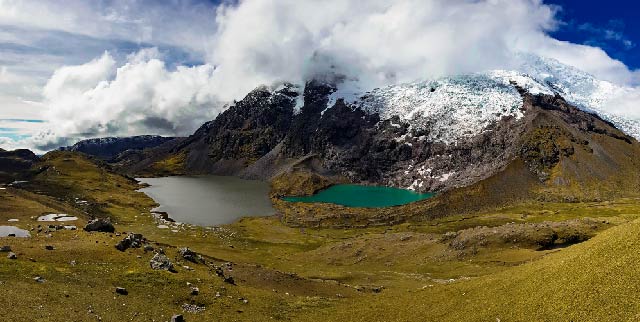

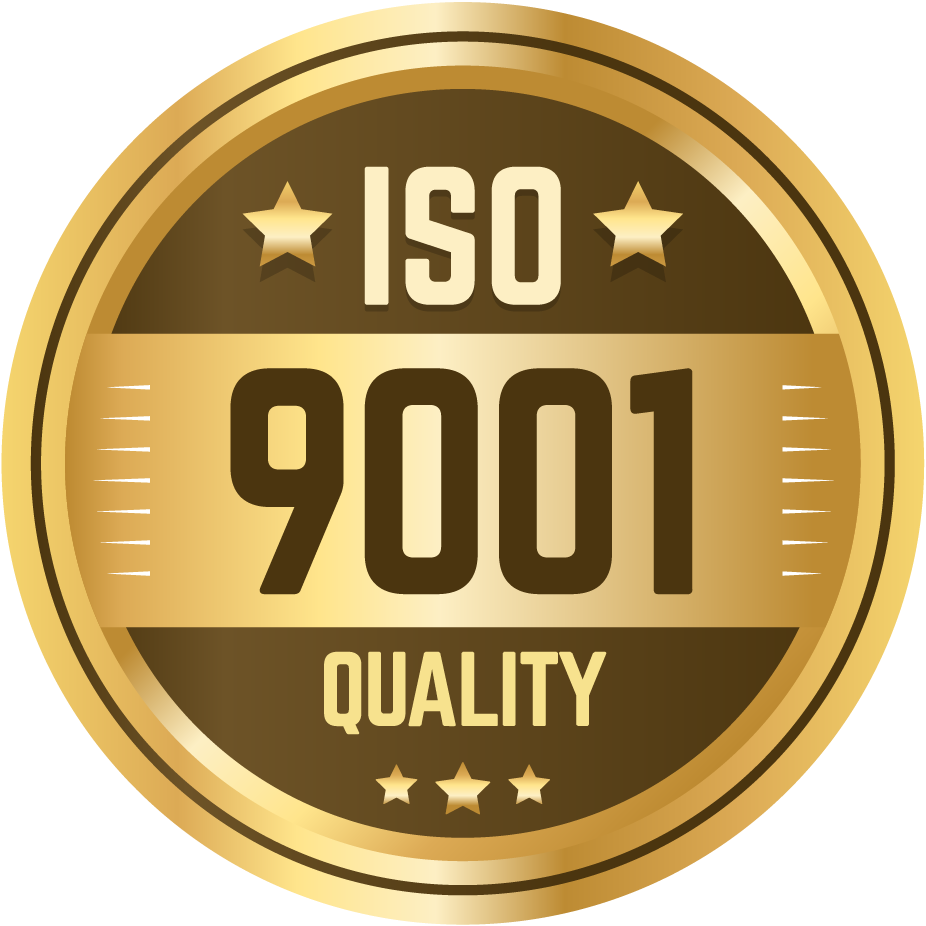







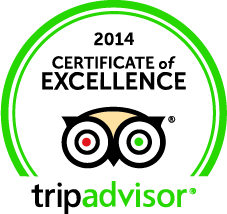
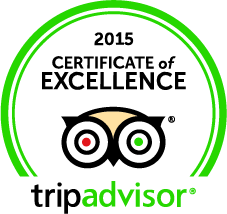



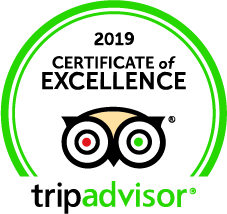



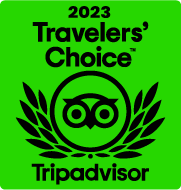















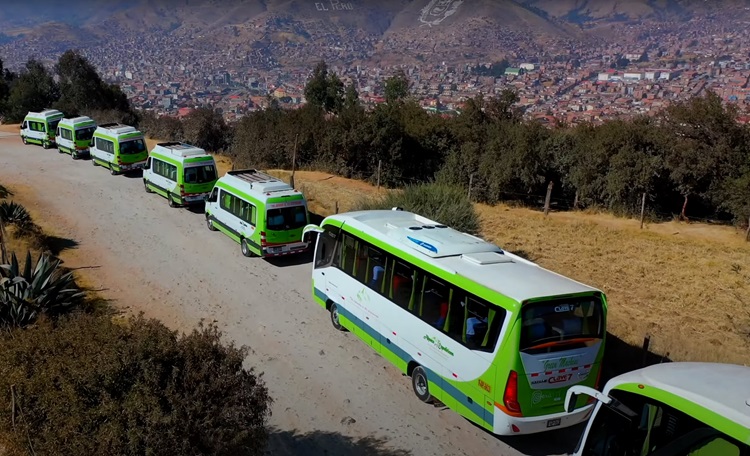
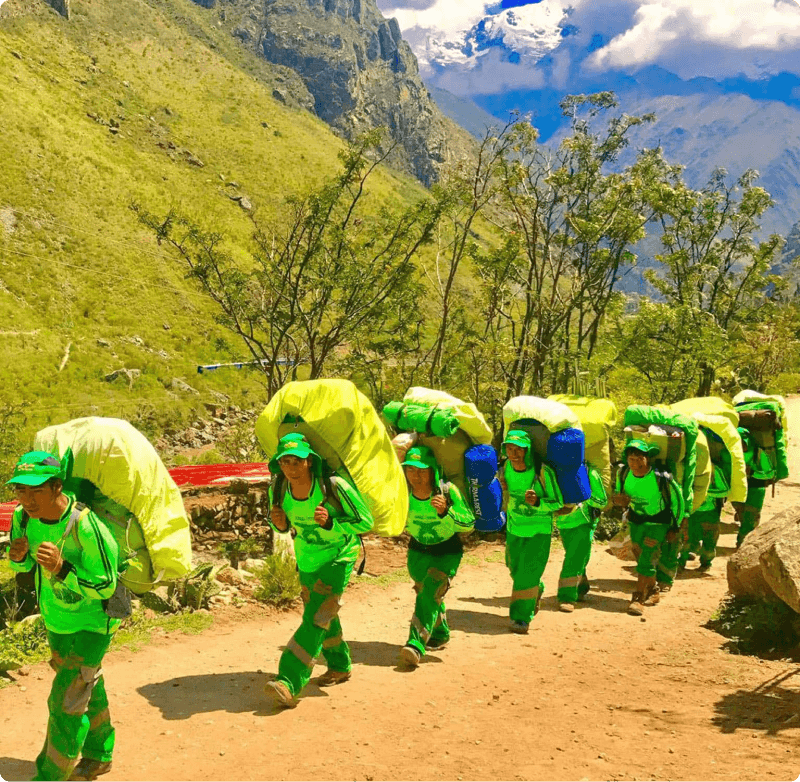 Porters will carry up to 7 kg of your personal items, which must include your sleeping bag and air mat (if you bring or rent one). From us, these two items weigh a combined total of 3.5 kg.
Porters will carry up to 7 kg of your personal items, which must include your sleeping bag and air mat (if you bring or rent one). From us, these two items weigh a combined total of 3.5 kg.